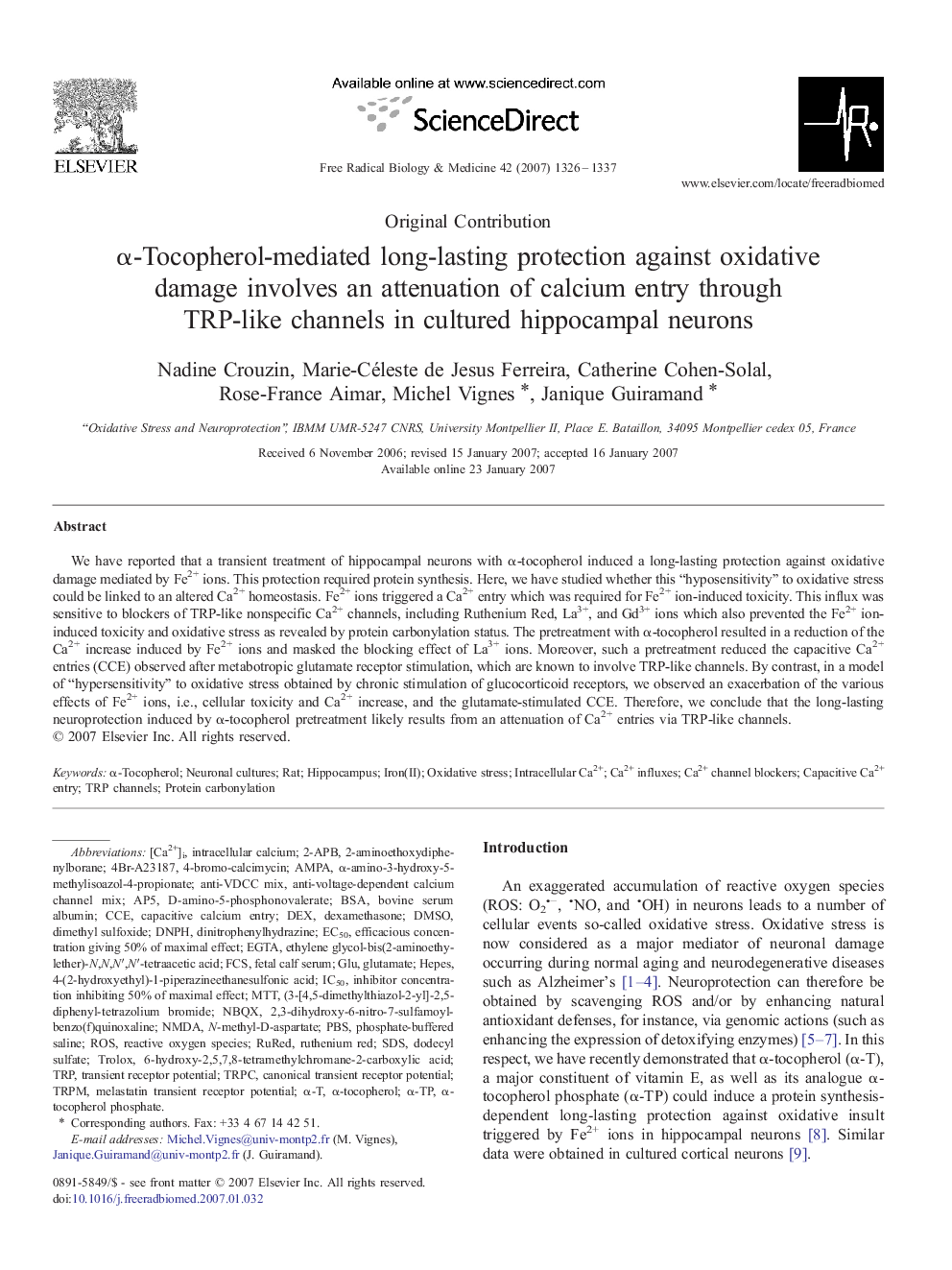| Article ID | Journal | Published Year | Pages | File Type |
|---|---|---|---|---|
| 1911557 | Free Radical Biology and Medicine | 2007 | 12 Pages |
We have reported that a transient treatment of hippocampal neurons with α-tocopherol induced a long-lasting protection against oxidative damage mediated by Fe2+ ions. This protection required protein synthesis. Here, we have studied whether this “hyposensitivity” to oxidative stress could be linked to an altered Ca2+ homeostasis. Fe2+ ions triggered a Ca2+ entry which was required for Fe2+ ion-induced toxicity. This influx was sensitive to blockers of TRP-like nonspecific Ca2+ channels, including Ruthenium Red, La3+, and Gd3+ ions which also prevented the Fe2+ ion-induced toxicity and oxidative stress as revealed by protein carbonylation status. The pretreatment with α-tocopherol resulted in a reduction of the Ca2+ increase induced by Fe2+ ions and masked the blocking effect of La3+ ions. Moreover, such a pretreatment reduced the capacitive Ca2+ entries (CCE) observed after metabotropic glutamate receptor stimulation, which are known to involve TRP-like channels. By contrast, in a model of “hypersensitivity” to oxidative stress obtained by chronic stimulation of glucocorticoid receptors, we observed an exacerbation of the various effects of Fe2+ ions, i.e., cellular toxicity and Ca2+ increase, and the glutamate-stimulated CCE. Therefore, we conclude that the long-lasting neuroprotection induced by α-tocopherol pretreatment likely results from an attenuation of Ca2+ entries via TRP-like channels.
